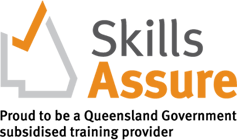Participating in proper first aid training is more than a means of embellishing your resume for prospective hiring managers – it’s a choice to make yourself capable of responding to a medical emergency and potentially saving someone’s life.
With some basic first-aid skills and knowledge, you can even help relieve someone’s physical pain or mental distress while waiting for emergency services to arrive.
Given the importance of first aid, it’s understandable why there is such an urgency to encourage others to enrol on a first aid course. The best first-aid courses will cover everything from how to perform cardiopulmonary resuscitation to how to use an automated external defibrillator. What’s more, the best first-aid courses will also teach you about DRSABC.
If you’re unfamiliar with DRSABC, don’t worry – we’ve got you covered! Today, we shall answer all of the common queries relating to DRSABC as we discuss what DRSABC stands for. Additionally, we shall also reveal the best place to study a first aid course!
What is DRSABC?
You should treat DRSABC as one of the first aid procedures you would utilize to observe the surrounding area where the crisis took place. DRSABC is also a means of assessing the physical condition of an injured person to determine what kind of first-aid treatment they need.
For many new first aid providers, DRSABC is an incredibly valuable tool as it provides a framework that details how you should respond in an emergency situation.
So, What Does DRSABC Actually Stand For?
So, now that you know that DRSABC is a useful framework that will guide your first-aid treatment, the next step is to find out what DRSABC entails so you can apply it to your own first-aid practices.
Here is every step of the DRSABC framework!
1. Danger
It is imperative that you follow the first step of DRSABC, which is known as the Danger step.
Although your immediate response when seeing an injured person may be to rush to their aid, you could potentially risk injuring yourself.
You must deal with any potential dangers in the surrounding area first, such as slippery floors and chemical hazards, before you administer first aid to the victim. By assessing the risks in the immediate area, you will keep yourself and others safe, ensuring that you’re able to provide the necessary first aid procedures to the victim.
In all emergency situations you encounter, you must thoroughly assess the danger of the situation first. If you have any doubts concerning the safety of approaching a casualty, the best response is to wait and call the emergency services. If it’s safe enough to do so, it could also be an effective emergency response to ask for someone to assist you.
2. Response
Only if you’ve established that it’s safe enough to approach the casualty, your next step is to check said casualty for a response.
During the Response stage of DRSABC, the first way you should try to elicit a response from the injured person is to try and get their attention to see if they are able to respond back. You can do this by saying the individual’s name (if you know it), gently touching them, or you can ask them simple questions. Some of the best questions to ask the injured person are as follows:
– ‘What is your name?’.
– ‘What is today’s date?’.
– ‘How many fingers am I holding up?’.
– ‘Can you feel it when I touch you?’.
Alternatively, you can also use the C.O.W.S approach:
– C: Call out to the injured individual by saying, ‘Can you hear me?’.
– O: Utter the phrase ‘Open your eyes’.
– W: Ask the casualty, ‘What is your name?’.
– S: Ask the casualty to squeeze your hand.
If you manage to get a response, it’s helpful to determine the nature of the victim’s suffering. Without overwhelming the victim, you should try to check with them about where their pain is and the severity of the pain.
By doing this, you can clarify the physical condition of the victim, what might’ve happened to cause the emergency situation, and what help they might need. In turn, this will help you communicate the nature of the situation with emergency services.
If the victim isn’t capable of responding, you must move on to the next step hastily.
3. Send For Help
The third step of DRSABC requires you to Send For Help regardless of whether or not the casualty responds to you.
Typically, this step involves calling the relevant emergency services or requesting someone else to do so as you tend to the injured or ill person. Once you’re able to get in contact with an operator, you should use the information you’ve acquired in the previous steps to clarify the crisis to the operator.
The biggest problem you might face in this situation is if you don’t have access to a nearby electronic device or if there is no one around to assist you. However, leaving the injured individual could result in them becoming disoriented and panicked. What’s more, they could even try to move, which may result in further injury.
You should only leave an injured person alone if there is no other option. You should also try to return to the injured person as soon as possible, or keep them in your line of sight if you can.
4. Airway
The second half of DRSABC only applies if the victim hasn’t responded and appears to be unconscious and not breathing.
During the Airway step, you should start by double-checking if the victim is definitely not able to respond. It’s worth noting that, at this point, professional medical help should be already on the way.
The next thing you should do is try to keep the injured person breathing by making the person’s airway clear. You can check the person’s airways by getting visual confirmation that there is or is not something blocking their throat or nose. By checking the person’s mouth and nose, you can determine what may be stopping them from breathing, and if you think you can, you should safely remove any obstructions.
Note: It’s generally recommended that, even if you feel like you can safely remove any obstructions from the victim’s throat or nose, you should wait for a medical professional to arrive.
If there is nothing visibly obstructing the person’s airways, then you should still remember to make sure the person’s airways are always clear and open. To do this, you can position the victim on their back, and with two fingers, you can tip their head gently back so the casualty’s neck is straight.
5. Breathing
As soon as you’ve cleared the casualty’s airways, you can move on to the fifth step of DRSABC – Breathing.
This step involves a breathing check to determine if the victim is able to breathe. You should first check to see if their chest is moving up and down. If you’re unsure of whether or not their chest is moving, you must place your ear near their nose and mouth to see if you can hear the victim breathing. Take note of the sound of the breathing and ask yourself:
– Does the casualty’s breathing sound shallow?
– Does the casualty’s breathing sound rapid?
– Does the casualty’s breathing sound obstructed?
Alternatively, you could place your hand on the victim’s chest to feel for any signs of movement. If you’ve determined, from any of the above methods, that the victim is breathing but unconscious, you should put them into the recovery position until the ambulance arrives. By doing so, you’ll prevent the victim from choking or causing further damage to themselves.
Note: If someone has an obvious physical injury, like an injured limb, for instance, do not move them into the recovery position.
6. Circulation/CPR (Cardiopulmonary Resuscitation)
If the casualty isn’t breathing, that’s when you apply the last step of DRSABC – Circulation/CPR.
To effectively carry out CPR, you must kneel next to the casualty’s chest, placing the heel of your hand on the middle of it above the casualty’s heart. Place your other hand on top, and make sure your fingers interlock with your other hand.
Now that you’re in the right position, you must start chest compressions. Your aims need to remain straight, and you need to press down on the victim’s chest hard before releasing the pressure, allowing the victim’s chest to rise back up again. You should repeat this until you’ve performed 30 chest compressions, followed by a brief interval where you’d prove 2 rescue breaths.
If your casualty responds to CPR by becoming conscious again, opening their eyes, or speaking/coughing, put them into the recovery position and keep your attention focused on them, should they need CPR again.
If the casualty doesn’t respond, you should continue performing CPR until the emergency responders arrive on the scene to take over.
Where You Should Study First Aid
The DRSABC framework is one of many tools you can use to administer the first aid that could save someone’s life. However, there is more to first aid than just DRSABC, and if you wish to have the confidence to handle any emergency, you must find the first aid course that offers excellent, versatile first aid training. This is where Sage Education enters the picture.
Sage Education is a nationally registered training organisation that has helped shape the next generation of caregivers and support workers for 26 years! Helping over 3000 graduates secure rewarding careers in the aged care industry, childcare industry, and disability support industry, our ethos is driven by our love of education and the compassion of our students.
At Sage Education, we believe that any individual who goes above and beyond to acquire the skills that will improve someone’s life deserves nothing short of a transformative educative experience. When it comes to students who wish to learn first aid and CPR, there is no exception.
What You Will Learn with Sage Education
We offer a trio of first-aid courses, all of which cover basic first-aid training. Regardless of which course you choose, you will learn about the following:
- DRSABC.
- How to assess an emergency situation.
- How to perform CPR.
- How to manage the unconscious and breathing casualty.
- How to conduct safe manual handling.
We also offer context-sensitive first aid courses that will prepare you to administer first aid in an education and care setting, as well as how to administer first aid to elderly casualties. In these courses, we shall cover every topic from the list above, as well as how to respond to allergic reactions, anaphylaxis, bleeding, and more.
Starting at $79.00, our courses are comprised of two parts: an online assessment and an in-person practical skills training and assessment. With Sage Education, at the most, it will take you 10 hours to become a proficient, confident first-aid officer!
Enrol with Sage Education for Excellent First Aid Training
We’ve helped hundreds of successful applicants become proficient first aid providers, and we have the practical training and specialised competencies to help you become one too!
Enquire today about our revered first-aid courses today!



